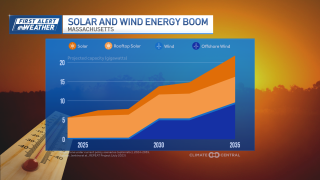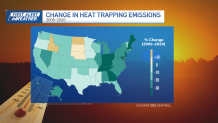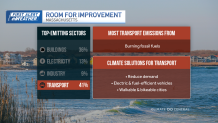
A surge in solar and wind energy is propelling the nation toward its 2050 emissions goals, with federal targets aiming for 50% below 2005 emission levels by 2030.
By 2035, the objective is to achieve 100% carbon-pollution-free electricity, ultimately reaching net-zero emissions by 2050. Massachusetts is leading the way with state legislation, particularly Bill S.9, outlining equitable goals to reach carbon neutrality by 2050 while safeguarding low- and moderate-income communities.
Yesterday, Massachusetts generated enough solar energy to sustain 20% of homes, saving an estimated 4,330 tons of heat-trapping gas emissions—equivalent to planting 72,000 trees. While wind energy currently powers less than 1% of homes, offshore wind projects are projected to rival the impact of solar energy by 2030 as the industry grows.

Get New England news, weather forecasts and entertainment stories to your inbox. Sign up for NECN newsletters.
According to Climate Central, Massachusetts has successfully reduced CO2 emissions by 30% between 2005 and 2020. However, the transportation sector remains a challenge as the leading emitter in the Commonwealth. To address this, initiatives like carpooling, making cities more pedestrian and bike-friendly, and transitioning to electric vehicles are pivotal steps toward a more sustainable future and a greener, cleaner tomorrow.


